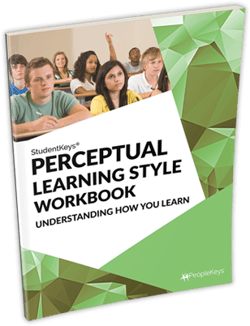
Before You Can Achieve, You Must Perceive - A Lesson in Perceptual Learning
Pardon the bad rhyme, but it’s true. Education is the precursor to achievement; a cornerstone of success. A successful educational experience is one in which the learner accurately perceives the instructor’s information.
We’ve all been there as students. A teacher is talking forever about something, and you simply cannot find a way to pay attention to his lecture. Or, maybe, someone is showing you how to change the oil in your car. They are just going through the movements without really explaining what they are doing or why, and leaving you completely lost. Then, there is the person who can remember exactly what color shirt you were wearing yesterday, but cannot seem to find the words to describe the location of the restaurant you were in.
These aren’t necessarily just communication issues; they are issues of perception. There are many perceptual channels used to perceive and understand information, but they all fall roughly into three major categories:
- Visual
- Auditory
- Kinesthetic
You’re probably familiar with this. Have you ever had someone tell you his name three times, and you just can’t remember it? At least, until you finally see it written on his name tag. This is an example of a preference for a visual perceptual style, and a lower auditory perceptual style.
Recognizing Your Style
Have you ever wondered why you can remember all of the words to a song you loved from the 90’s, but cannot remember how you know that person’s face, even though you’re certain you didn’t meet them very long ago? This is an example of a higher preference for an auditory/musical perceptual learning style, and a slightly lower visual style.
Do you find it easy to remember how to drive a stick shift in a friend's car, even though you only ever drive a vehicle with an automatic transmission? Or do you find that no matter how someone explains something, you can’t seem to really learn it until you do it for yourself? This is an example of a preference for a kinesthetic perceptual style.
The Difference Between the Styles
People with a high ability for using a Visual Perceptual Learning Style want to see the words in written form, an idea in some picture format, or assignments clearly described in a written/picture format.
Auditory learners use their voices and their ears as the primary mode for learning. They remember what they have heard and what they have expressed verbally. This may also take the form of musical or rhythmic perceptual strengths (for example, you can remember all the lyrics to songs easily).
Kinesthetic learners learn best when they can touch, or are physically involved with, what they are studying. These learners want to act out a situation, to make a product, do a project and, in general, be busy while learning. They don’t learn as well when they have to just sit and read. Traditional teaching methods favor the auditory and visual learning styles. Those with kinesthetic strengths typically have to become more creative in their study and learning methods to adapt.
The Research
 Educational research and texts often disagree about whether or not a person has one primary perceptual style, or if they have specific perceptual preferences within a given situation. One thing has become increasingly clear -- when a person uses a variety of sensory channels to perceive new information, they are better able to understand, analyze, and retain it. This can make things a lot easier for instructors.
Educational research and texts often disagree about whether or not a person has one primary perceptual style, or if they have specific perceptual preferences within a given situation. One thing has become increasingly clear -- when a person uses a variety of sensory channels to perceive new information, they are better able to understand, analyze, and retain it. This can make things a lot easier for instructors.
Instructors feel pressured to create individual lesson plans for all of their students. That’s ideal in theory, but difficult in reality. An instructor might have 150 students in a day. Creating a customized lesson plan for each student’s level of interest, background knowledge, skills and personality is nearly impossible. Trying to create a lesson plan that speaks to each of the three primary Perceptual Learning Styles? That is doable.
Using resources such as The Perceptual Learning Workbook can help instructors to become more informed about their student’s style preferences, but it can also give power to the students to improve their own educational strategies.
Resources like The Perceptual Learning Workbook create a culture of introspection around learning. They get students to think about how they think. It allows them to improve the way they learn, a skill that carries them through their educational experiences throughout their lives.
It's not always easy to control the learning environment, however, if you are aware of your or your students' Perceptual Learning Style preferences, and practice using all of your senses while learning, you can become capable of perceiving much more.







